
Free Airdrop Season 7 is LIVE! Answer fun questions or do simple tasks to earn rewards from the $30K BitDegree prize pool. Participate Now ! 🔥
With more and more businesses picking up cryptocurrency as a convenient payment method, it’s no surprise there are more exchanges catering to professional users than ever before. If you’re looking for a crypto trading platform suitable for corporate needs, this VALR review is just what you need!
Launched in 2018, this South African CEX aims to deliver top-notch crypto trading experience to both private and corporate clients. It features margin trading with up to 5x leverage, OTC service, staking, and futures or spot trading, among other tools.
I’m not going to spoil all the details just yet, though! Read my in-depth VALR review and learn all about this crypto exchange – and whether it’s good enough to tempt users away from established giants like Binance, Kraken, and Bybit.
Verdict at a Glance:
VALR is a user-friendly centralized crypto exchange that offers spot, margin, and futures trading with affordable fees and additional options like OTC trading and staking. Most of its disadvantages lie in the lack of fiat support and narrow crypto selection.
Pros
- Corporate-oriented features
- Multiple earning options
- Low trading fees
- Strict KYC requirements
Cons
- Narrow cryptocurrency selection
- Limited fiat support
- Inadequate multilingual support
Table of Contents
- 1. VALR Review: Quick Overview
- 2. VALR Alternatives
- 3. Who’s VALR For?
- 4. Advantages
- 5. Limitations
- 6. Trading Tools
- 7. Fees and Limits
- 8. Staking and Earning Rewards
- 9. Bonuses and Special Offers
- 10. Security
- 11. User Experience
- 12. Customer Support
- 13. Localization and Regional Adaptability
- 14. How to Use VALR
- 14.1. How to Create a VALR Account
- 14.2. How to Deposit on VALR
- 14.3. How to Withdraw From VALR
- 15. Comparison to Other Popular Exchanges
- 15.1. VALR VS Binance
- 15.2. VALR VS Kraken
- 15.3. VALR VS Bybit
- 16. Conclusions: Is VALR Right for You?
VALR Review: Quick Overview
Before we begin, here’s a bird’s-eye view of all the key features of the VALR crypto exchange. Feel free to scan through it before jumping into the main article.
Type | CEX |
Is VALR Safe? | YES |
Best for | Intermediate to advanced traders |
Established in | 2018 |
Headquarters | Johannesburg, South Africa |
Availability | Unavailable in 13 countries, including the US, Canada, and India |
Licenses | FSCA, VARA, VASP, FIU-IND, VARA, NCR |
KYC Verification | YES (mandatory for accessing most features) |
Security | 2FA, multi-sig, offline private key storage, 1:1 reserve |
Features | Spot trading, margin trading (5x leverage), futures trading (10x leverage), OTC, direct buying, swapping, staking, lending |
Supported Coins | BTC, ETH, SOL, and 124 more |
Funding Methods | Credit/debit card, bank transfer, SEPA, SWIFT |
Maker/Taker Fees | 0-0.0.1% maker / 0.01-0.1% taker |
Fiat Support | YES |
Customer Support | Email, ticket, live chat, social media, knowledge base |
Privacy & Anonymity | No anonymity features |
Table: Quick overview of VALR
See anything you like? If so, let’s get to the main course!
VALR Alternatives
Just one more thing – no platform analysis would be complete without a side-by-side comparison with the industry benchmarks, and this VALR review is no exception. Check out these top-rated alternatives:
- Binance. With a user base of over 250 million people, Binance is currently the most popular crypto exchange that offers margin, futures, copy, and PTP trading with 400+ cryptocurrencies. It operates in 180+ countries worldwide.
- Kraken. This platform is known for its user-friendly interface and robust security measures. Kraken offers 325 cryptocurrencies and multiple types of trading, such as margin trading with up to 5x leverage and futures trading with 300+ perpetual contracts.
- Bybit. Another A-list CEX, Bybit, features a variety of trading tools, extensive earning options, and competitive fees. You’ll find over 1,500 cryptocurrencies and additional services like a DEX and several types of Web3 wallets.

|

|

|
|
|---|---|---|---|
| Beginners | Advanced Users & Beginners | More Advanced Users | |
| United States, Germany, United Kingdom, France, Canada, + 190 more | Turkey, Argentina, Vietnam, Ukraine, + 180 more | South Korea, United Kingdom, Ukraine, Turkey, +160 more | |
| All Kraken Coupons | See All Coupons of Best Exchanges | See All Coupons of Best Exchanges | |
| One of the best crypto exchanges, especially in the US. | One of the leading crypto exchange platforms in the industry. | A popular crypto derivatives exchange with some super-low trading fees. | |
|
Visit site
Read review |
See TOP10 Brands
Read review |
See TOP10 Brands
Read review |
Table: Binance, Kraken, and Bybit comparison
I’m going to include a more detailed comparison section below – but for now, let’s meet our exchange in question!

Did you know?
All Crypto Exchanges may look similar to you but they're NOT all the same!
Who’s VALR For?
As a reader of this VALR review, your only job right now is to determine if this exchange is right for you in the first place. Good news – I’m way ahead of you there! Let me give you a hint or two as to what kind of users the VALR crypto exchange is trying to attract:
- Corporate users. VALR offers an extensive list of features aimed at businesses, such as OTC trading, opening thousands of self-standing sub-accounts, multiple-user access, and dual authorizations for transactions.
- Long-term crypto holders. With its numerous ways of earning passive income off your crypto holdings, VALR is great for not only active traders but also those who prefer buying crypto as an investment.
- People who use crypto as a payment method. VALR has its own merchant payment gateway, which makes it a suitable exchange for crypto enthusiasts who enjoy using crypto for making purchases.
- Experienced traders. VALR’s margin and futures trading options, as well as its extensive API integration, will be appealing to intermediate and advanced crypto investors looking to expand their trading skills beyond the basic level.
If any of this speaks to you, read the rest of this write-up to find out exactly how you can benefit from the VALR exchange – and where it might let you down, potentially.
Advantages
Without further ado, here’s a list of this platform’s strong suits:
- Corporate-oriented features;
- Multiple earning options;
- Low trading fees;
- Strict KYC requirements.
As I mentioned at the beginning, VALR markets itself as an exchange that caters to business clients, not just private users. There’s a whole host of features aimed at this user demographic: white-glove OTC trading with extensive and discreet support, an option for 1,000s of independent sub-accounts, multi-user authorizations, a merchant payment gateway, and more.
Next up, VALR boasts two passive income-earning options: staking and lending. The former entails locking up your crypto to contribute to the exchange’s liquidity, while the latter allows you to earn money off interest rates.
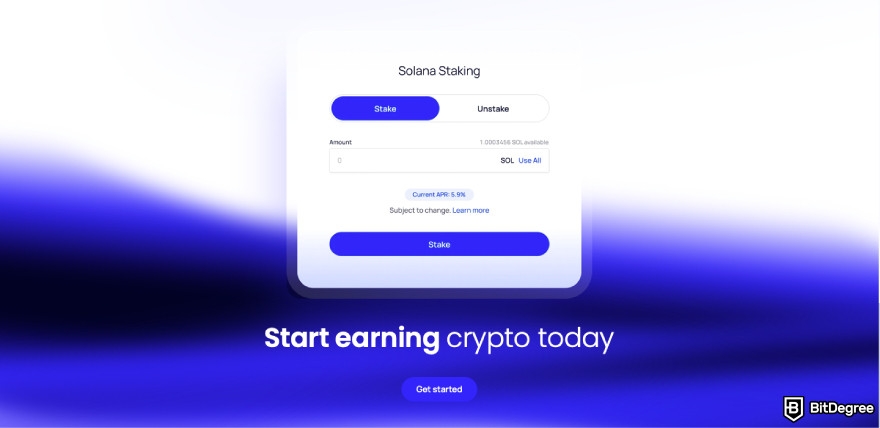
Another perk is low trading fees. Both maker and taker fees for all spot trading pairs and perpetual contracts range from 0% for makers to 0.01% for takers, which is right on par with most major exchanges - definitely a treat for active traders.
Last but not least, VALR clearly didn’t skimp on security measures. The KYC verification banner practically beats you over the head every step of the way until you complete it (otherwise, you can’t access most of the platform’s functionalities). VALR employs a multi-signature system, cold storage for private keys, and a 1:1 reserve ratio.
Limitations
There’s no such thing as a perfect crypto exchange, of course – so let’s take a look at where VALR falls short:
- Narrow cryptocurrency selection;
- Limited fiat support;
- Inadequate multilingual support.
One of the best things about being a crypto trader is having countless coins and tokens to choose from. Unfortunately, the VALR crypto-list is nothing to write home about. The exchange has only 127 cryptocurrencies and 48 markets available for spot and even fewer for margin and futures trading.
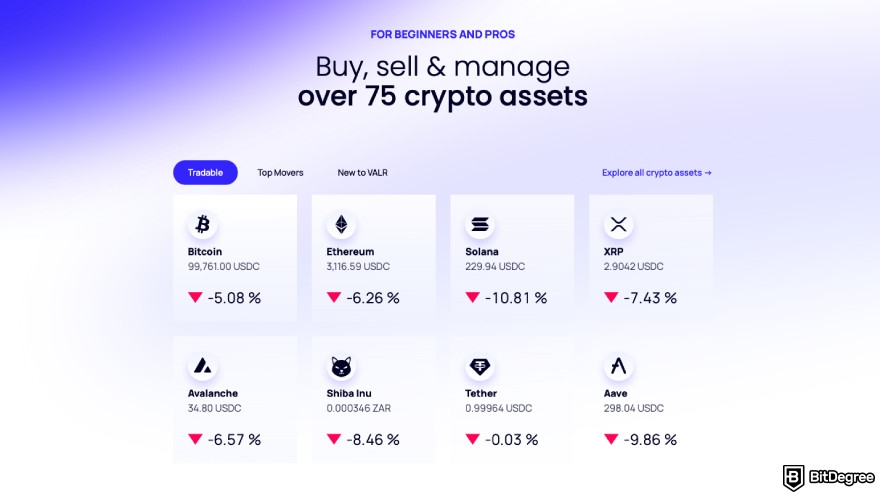
Fiat support is another shortcoming I should mention. Being a South African exchange, VALR strongly favors the South African Rand (ZAR) as its fiat currency of choice. It’s the only option offered for trading and the only one you can withdraw or fund your account with through a bank transfer or credit/debit card. The only two other fiat currencies VALR supports are EUR and USD, both only available through wire transfer.
On a related note, despite the vision of global reach featuring heavily on the company’s website, VALR’s support for international audiences definitely feels lacking. Besides English, the only other interface language you can pick is Simplified Chinese.
Trading Tools
Now that you’ve got an overview of this exchange’s pros and cons, let’s take a closer look at all of its features with a magnifying glass! Crafting this VALR review gave me ample opportunity to get to know this platform inside and out. First off, I’m going to share my insights about its trading tools.
Here’s what VALR offers in this area:
- Direct crypto buying, selling, and swapping;
- Spot trading with 127 cryptocurrencies;
- 23 margin trading pairs with up to 5x leverage;
- 13 perpetual trading contracts with 5x or 10x leverage;
- OTC trading.
Like most exchanges, VALR has the option to buy or sell tokens and coins directly using either fiat currency or another crypto asset. That said, as noted previously, the only fiat currency you can select outright is ZAR, which, of course, is pretty convenient for South African users, but not so much for everyone else. You can top up your account with EUR or USD through a SWIFT transfer, but the credit/debit card option only applies to ZAR.
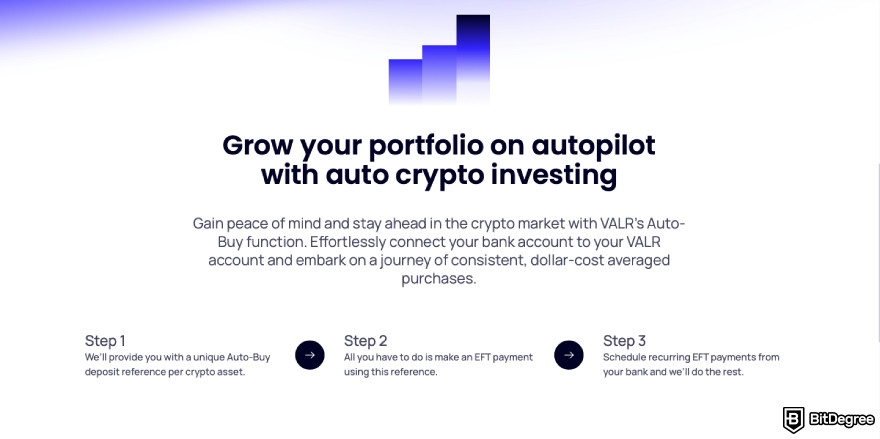
Now, VALR also offers a highly customizable interval system: you can choose to buy a specific asset as often as once every few minutes or as infrequently as once a year. The microscopic interval is the platform's way of implementing a grid trading strategy that turns market fluctuations into a feature, not a flaw.[1]
Then we have spot trading, of course. As I said, this platform doesn’t exactly offer a banquet feast when it comes to coin selection, but the VALR crypto list does include most of the mainstream coins like BTC, ETH, SOL, BNB, DOGE, and others. Once again, ZAR gets the spotlight as the only currency in fiat trading pairs.
Most of the VALR crypto trading markets are paired with USDT, but traders who prefer bypassing stablecoins and getting straight to business can choose the BTC/ETH trading pair.
Margin trading is another popular option that hardly any exchange these days lacks. VALR contains a pretty satisfactory package: you get 23 margin trading pairs (including BTC/ETH) with up to 5x leverage.
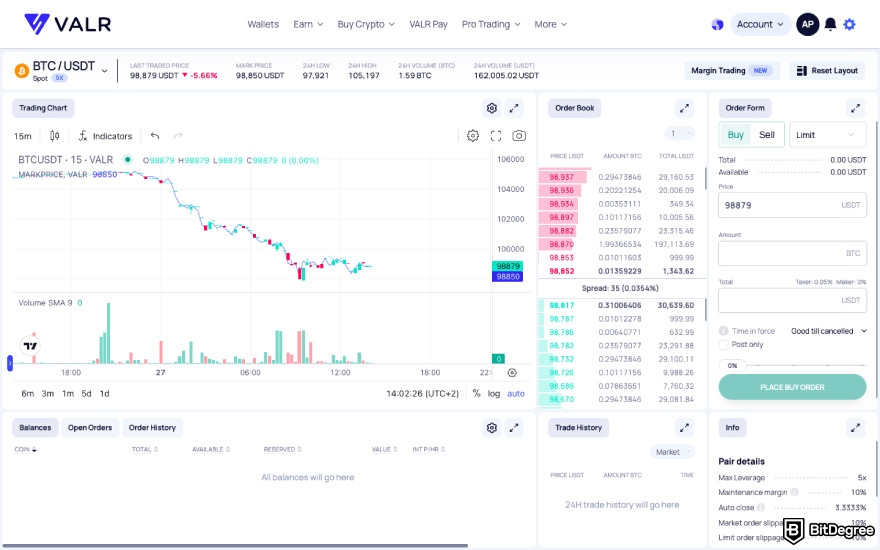
What about futures trading, you’re probably going to ask next? Right there with you! VALR supports 10 USDT-based perpetual contracts and 3 more with ZAR. Some contracts have 5x leverage, while others go all the way up to 10x. Futures trading requires further verification, though – aside from basic KYC, you’ll have to verify your address, too.
In addition, VALR imposes an additional safety net of only allowing margin and futures trading from a sub-account rather than the main account.
That said, one of the platform's greatest assets for businesses is its OTC trading service. VALR offers a premium, highly personalized white-glove approach for helping institutions or large net-worth clients execute sizable trades discreetly and with no hassle.[2]
Fees and Limits
There’s not much use going on about trading features without specifying the costs, right? It’s time to unpack the VALR exchange fees.
Type | Category | Fees | Limits |
|---|---|---|---|
Deposit | Crypto | Free! | No minimum deposit |
| USD via Wire Transfer | 0.13% | Minimum deposit – $10 |
| EUR via Wire or SEPA | 0.13% | Minimum deposit – €1 |
| ZAR Deposit via Card | 3.9% | - |
| ZAR Deposit via EFT | Free! | - |
Withdrawal | Crypto | Varies by coin and network | Depends on the verification level |
| ZAR (Normal Withdrawals) | 30 Free withdrawals per month (R8.50 thereafter) | Depends on the verification level |
| ZAR (Fast Withdrawals) |
| Depends on the verification level |
Buy/Sell | Simple/Auto-Buy | 0.6% | |
Spot Trading | Fiat Pairs | 0.01% maker / 0.1% taker | Depends on the trading pair |
| Crypto-to-Crypto Pairs | 0% maker / 0.05% | Depends on the trading pair |
| Stablecoin Pairs | 0% maker / 0.01% taker | Depends on the trading pair |
Perpetual Contracts | All Pairs | 0% maker / 0.04% taker | Depends on the trading pair |
Table: VALR fees
As you can see, VALR employs a pretty intricate fee system. What stands out the most is the fact that makers get to enjoy most types of trading completely free of charge – and even taker fees are still lower than what you’d get on most other platforms.
This is probably why the exchange doesn’t offer a standard VIP tier system, although it does have a VIP discount on futures trading. Takers who make up over 2% of the exchange’s total trading volume (across both spot and futures trading) will have their perpetual contract fees reduced from 0.04% to 0.03%.
Staking and Earning Rewards
Staking is one of the easiest ways to make crypto work for your benefit and generate a passive income. A lot of less popular exchanges pass up on this feature, but luckily, VALR isn't one of those.
In line with the platform’s conservative crypto selection for trading, you can only stake 3 assets on VALR:
The rewards may change from day to day, though – VALR’s website states that you can earn up to 6% APR.
This platform offers a flexible type of staking where you can stake and unstake your funds anytime you want and get them released immediately. The rewards are paid on an hourly basis.
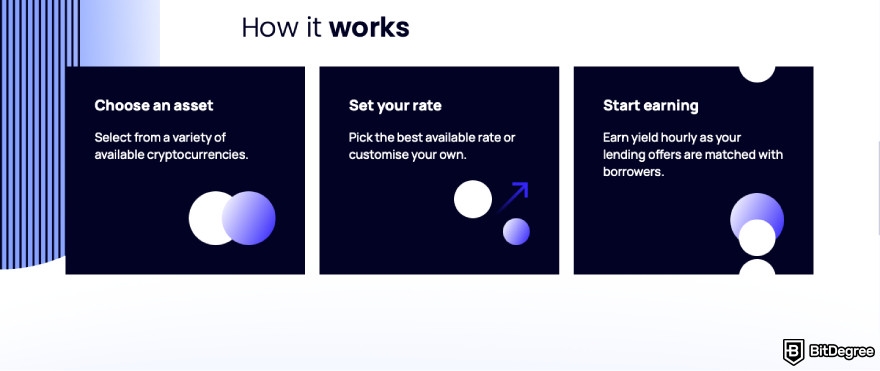
Alternatively, you can opt for lending by putting your crypto up for an hourly auction to earn interest. In contrast to staking, you can set your own APR. A lower interest rate is more likely to match you with a borrower, while a higher rate maximizes your potential earnings. Ultimately, the choice depends on the strategy you prefer.
The crypto selection is larger, too – VALR offers 10 assets for lending, including BNB, USDT, USDC, DOGE, and XRP.
That said, just like with staking, lending rewards are paid on an hourly basis.
Bonuses and Special Offers
Most exchanges have a bunch of ways to motivate users to stay on the platform and keep the ball rolling. VALR's collection of promotions and bonuses isn't as extensive as that of some other options, but active traders will still find some opportunities to get their game on.
To begin with, this platform offers a pretty generous referral program that lets you earn not only a share of the referred user’s trading fees but a rebate on your own trading fees, too. Here’s what this system looks like:
Referral Level | Rebate | Commissions |
|---|---|---|
Level 1 | 10% | 15% |
Level 2 | 15% | 25% |
Level 3 | 15% | 30% |
Table: VALR referral program rates
Both rebates and commissions are paid daily in the same crypto asset that was used in the trade.
You can hand out as many referral links as you want – however, for the referral to count, the referred user has to pass the KYC verification.
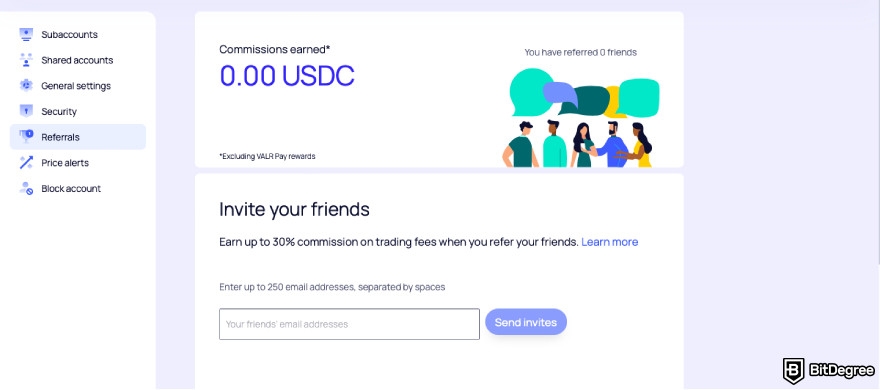
Another benefit I couldn’t pass up mentioning in this VALR review is the VIP program. I’ve already touched on its fee discounts, but that's just the tip of the iceberg. VIP users get a whole package of benefits, including:
- High-priority support through email and a dedicated Telegram channel;
- Invitations to exclusive company events, conferences and webinars with industry experts;
- Exclusive access to VALR-branded VIP merchandise;
- Early access to beta features.
To become a VIP member, your average 30-day trading volume has to exceed $10 million across spot and futures trading. If this sounds like a tall order, there's another way. If you screenshot your status and trading history, VALR lets you transfer your VIP membership from another exchange.
On the other hand, if you’re more of a casual trader, keep an eye out for the exchange's regular trading competitions and other events to earn some free crypto.
Security
At this point, you’re probably wondering, “Is VALR safe?”. The thing about security measures is that they're not always immediately visible – for this section of my VALR review, I had to dig deeper to determine if this platform’s protection is up to snuff.
Speaking of immediate – there’s one feature you definitely won’t be able to miss. On most exchanges, KYC is more of a background thing you won’t notice unless you need it, but on VALR, you’ll be reminded of it every step of the way. KYC is required not only for trading but practically every feature, including staking, lending, or even accessing your wallet and assets.
On top of that, VALR employs 2FA, cold asset storage for private keys, and the multi-signature system.
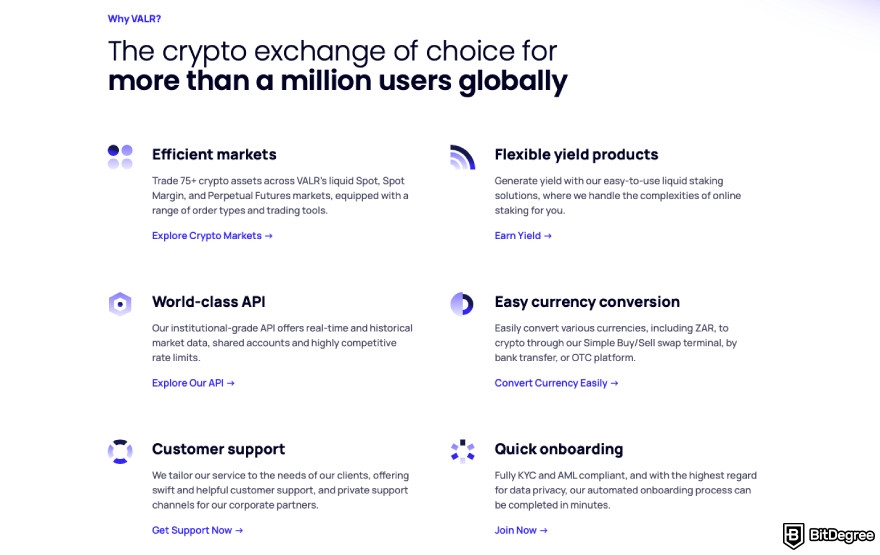
There are just a couple of things that keep me from giving VALR top marks in this area. I couldn’t help noticing there was no information about security or proof of reserve audits, despite the company’s claims of 1:1 reserve. Another thing that’s notably missing is the user insurance fund.
At the end of the day, is VALR safe enough for most users? My answer would be “yes”, but given that VALR markets itself as a corporate-grade platform, the bar is set higher than for your average exchange, and I’d say this platform falls slightly short of those expectations.
📚 Read More: Cryptocurrency Security Guide
User Experience
What really stood out to me while I was getting to grips with the platform for this VALR review was just how easy it was to learn about all of its features. The VALR crypto trading interface is pretty intuitive – everything is exactly where you’d expect it to be.
The sign-up process is simple and straightforward, too, with an option to sign up with your Apple or Google account for extra convenience.
Mobile users won’t be disappointed, either – this platform has mobile apps for both iOS and Android. You’ll find the VALR crypto exchange app download link in the form of a QR code in the top right corner of the landing page.
By now, you probably can’t wait to hear more about one of VALR’s flagship features I mentioned earlier – the sub-account system. On VALR, each user can potentially create thousands of sub-accounts. Each has its own deposit address, allowing it to be self-standing. You can create sub-accounts not only directly on the platform, but through the API, as well.
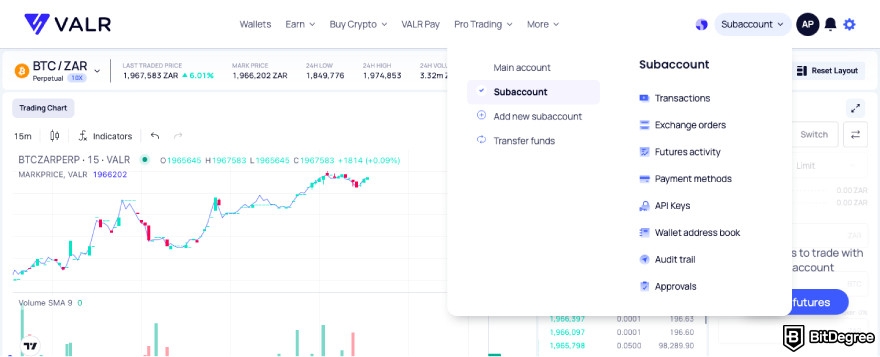
This feature opens up all sorts of possibilities for both business and private clients. Just to give you a few use case examples: you could take advantage of sub-accounts to implement different trading strategies for each one or isolate your margin positions.
As for corporate users, this system is clearly intended for managing client accounts in a scalable way. The same account or sub-account can be accessed by multiple users without sharing login details, and you can set up dual transaction confirmations so that every transaction or withdrawal requires two people’s authorization to go through.
Speaking of authorization – let’s get back to KYC a bit. While VALR’s uncompromising approach is commendable, I have to say that, from the user experience standpoint, being unable to access parts of your account without verification can be a bit of a nuisance. Some users prefer to familiarize themselves with the exchange before getting around to KYC, but VALR doesn't really give you a chance to postpone it.
Customer Support
Don’t you just hate it when you’re having some issue with your deposit or withdrawal, and all you’re getting from the customer support team is crickets? Luckily, what I’ve seen with VALR is quite the opposite. Although there was a concerning number of negative feedback from other users, the company has responded to the majority of reviews (both positive and negative ones).
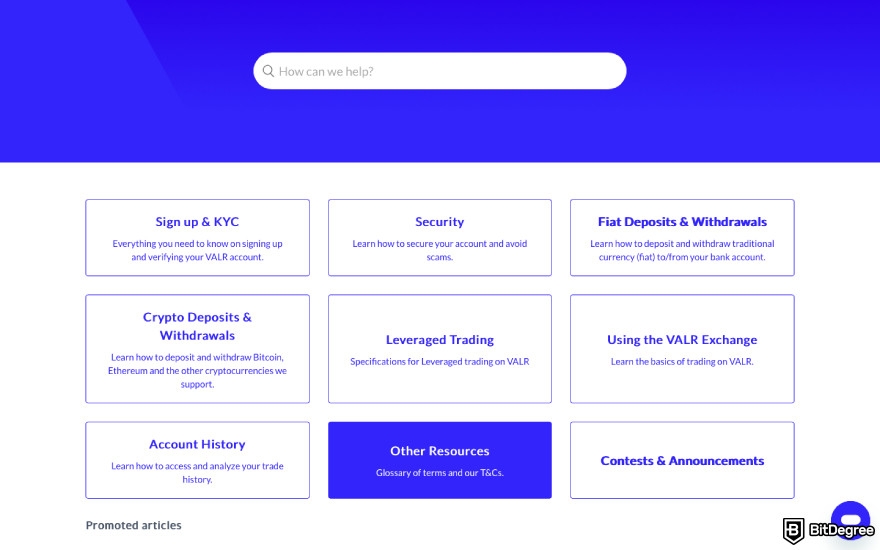
VALR has all the standard customer support channels: live chatbot, email, and tickets, as well as multiple social media accounts (X, Telegram, LinkedIn, Facebook, Instagram, and YouTube).
If you’re just trying to learn about a certain feature, you can always check out the FAQ page. VALR features a helpful and well-organized knowledge base with pinned articles addressing the most common questions.
Localization and Regional Adaptability
Time to delve into another common concern: regional availability. If you’re already dreading finding out whether VALR is available in the US, your hunch is correct. VALR’s services exclude countries under international sanctions and a few others, including the United States, Canada, India, Cuba, Iran, Syria, Sudan, South Sudan, Somalia, Russia, Ukraine, Kazakhstan, and North Korea.
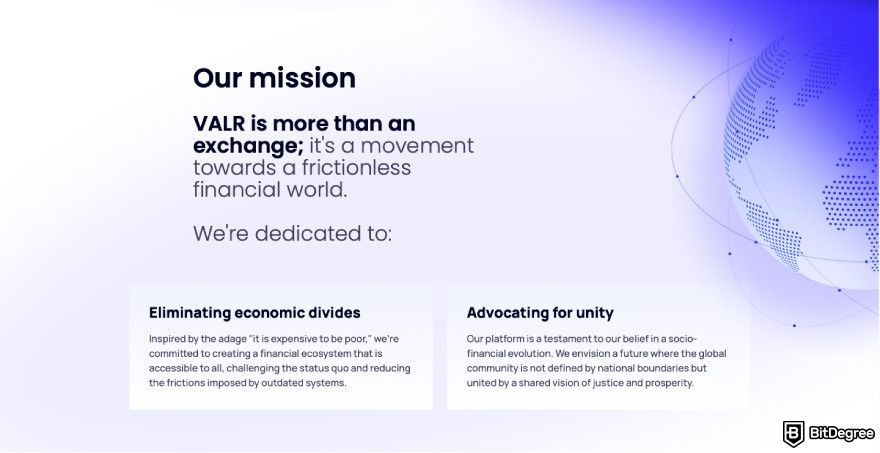
Of course, that still leaves plenty of countries where you’ll be able to use VALR. Here’s a list of countries and regions where the exchange is officially licensed:
- South Africa;
- Zambia;
- Dubai;
- India;
- EU.
That being said, as I highlighted earlier, VALR’s localization features leave something to be desired. ZAR is the only fiat currency available for direct deposits, withdrawals, and trading. The only other two choices are USD and EUR, but only through a SWIFT transfer. VALR’s multilingual support is lacking, too. The only other interface language you can switch to is Simplified Chinese.
How to Use VALR
Now that I’ve shown you around every corner of the exchange, it’s time to get up close and personal with it. Don’t put this VALR review aside just yet, though! You’ll find some handy step-by-step guides below to get you started.
As a side note – these guides are for the web app, but if you'd rather use the mobile version, download it on Google Play or iOS App Store and follow the same steps there.
How to Create a VALR Account
When trying to sign up on VALR, you have two alternatives: creating a new account on the exchange or signing up with your Apple or Google account. The latter will be quicker and more convenient for most – but, just in case you prefer segregating your accounts, let me show you how to register on the exchange itself:
Step 1: Click [Get started] in the top right corner.
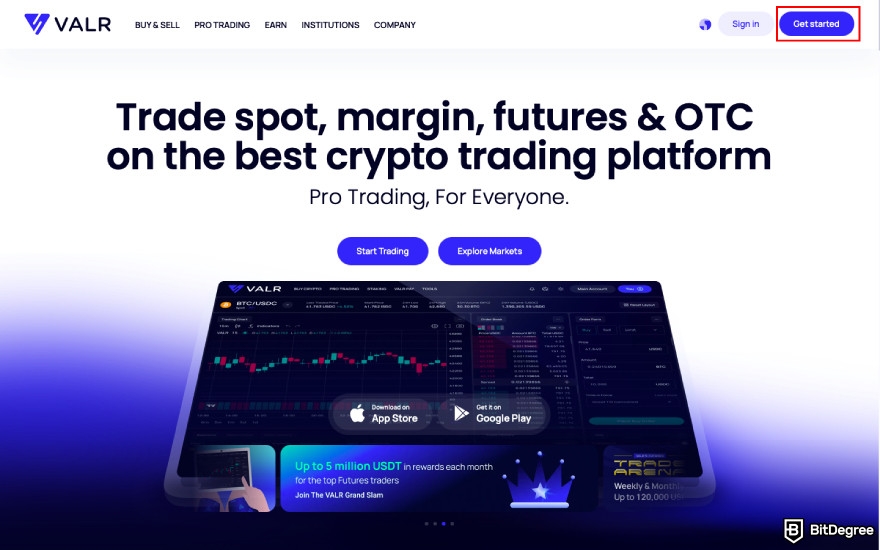
Step 2: Fill out the registration form, click the checkbox to complete the CAPTCHA verification, and click [Next].
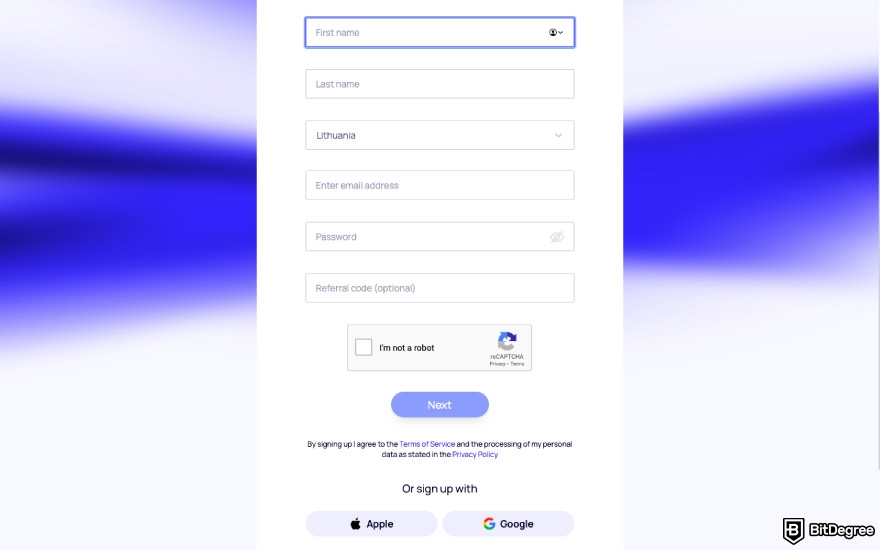
Step 3: When you see this message, go to your email and find the verification letter, then click on the provided link. You’ll be redirected to Step 4.
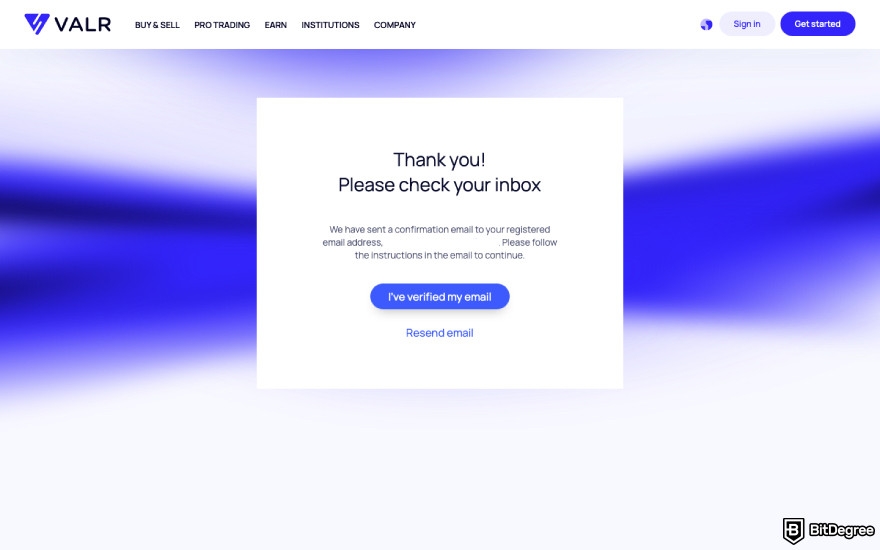
Step 4: Click [Sign in].
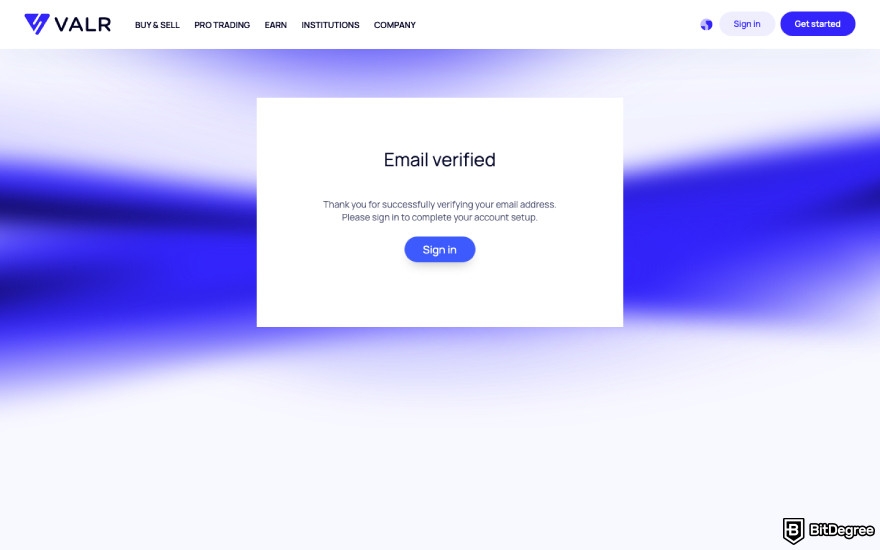
Step 5: Enter your login details and click [Next].
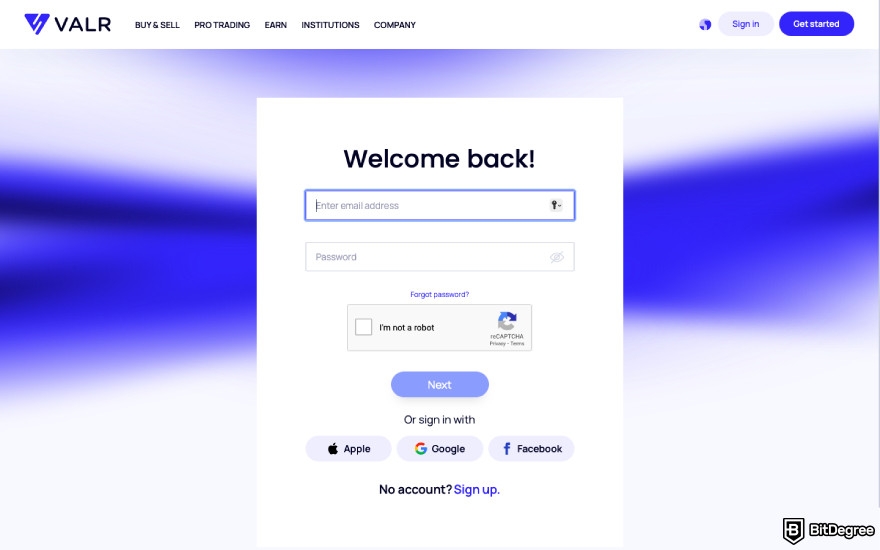
Step 6: Enter your mobile phone number and click [Next] to complete the initial verification.
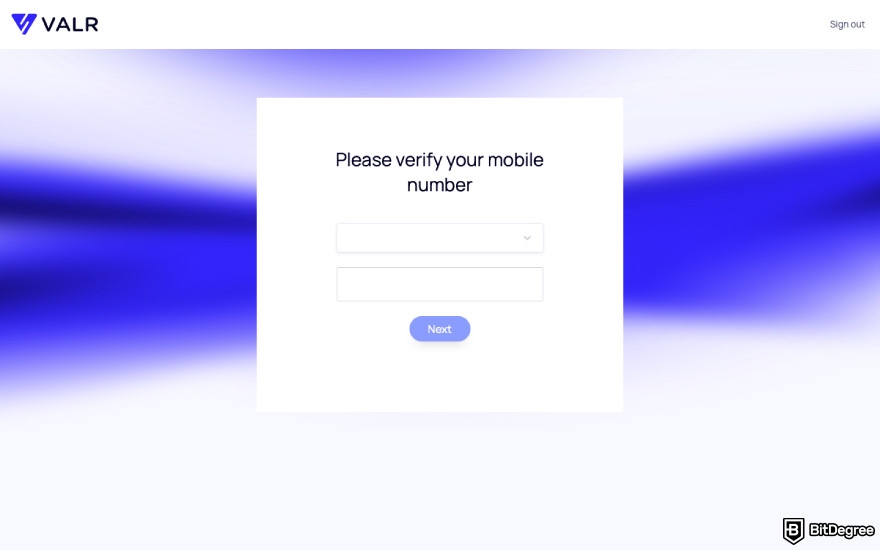
That’s it for now! Once you’re finished, you’ll receive a prompt to complete your KYC verification. I’d recommend getting it over with right away – just click [Verify my ID] and follow the instructions.
How to Deposit on VALR
Once your account is up and running, you’ll want to deposit some crypto so that you can start trading or staking. Here’s how to do it:
Step 1: Go to your dashboard by clicking on the VALR logo in the top left corner and click [Deposit funds].
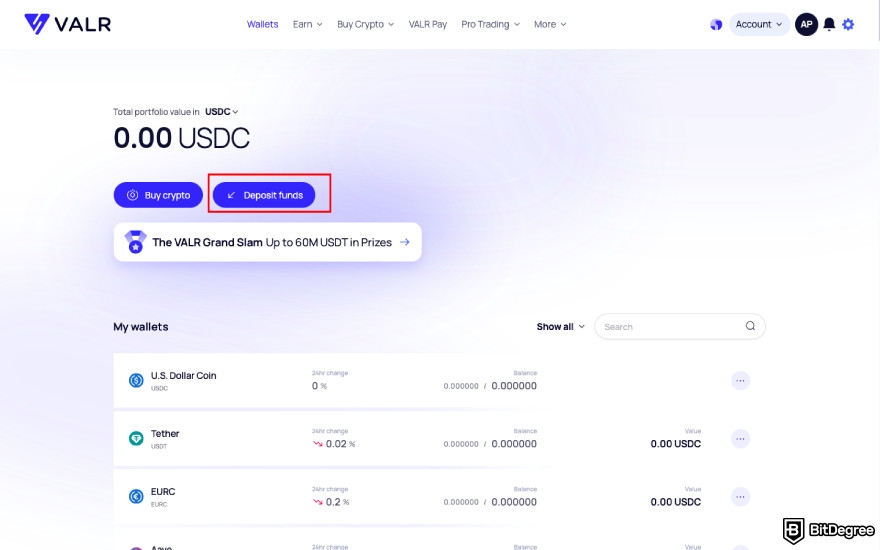
Step 2: Switch to the “Crypto” panel (if you’re trying to deposit crypto) and pick the coin you want to deposit. You can scroll down to find it on the list or type it into the search bar.
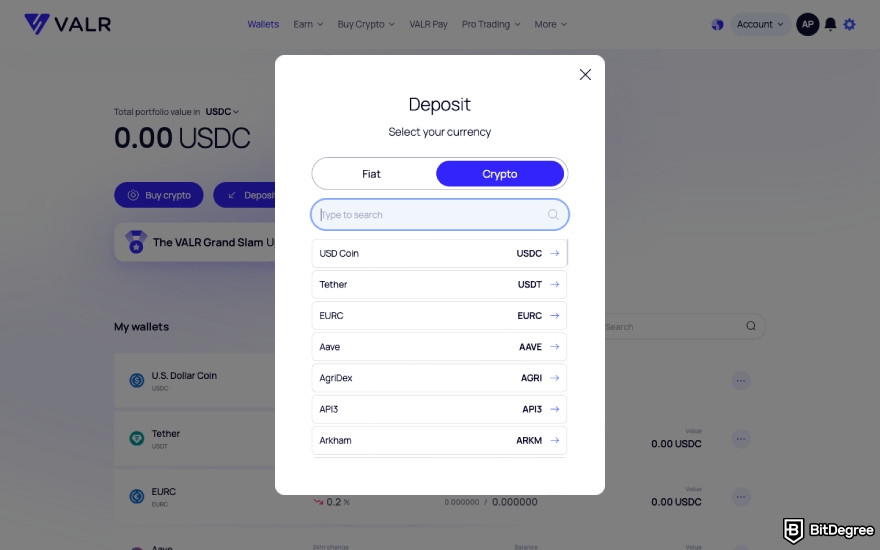
Step 3: Read the notice and click [I’m ready]. Check the box if you want to skip this message the next time you make a deposit.
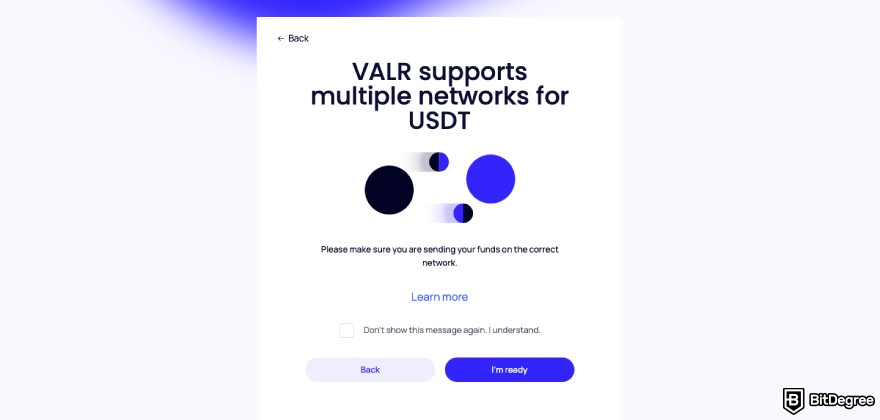
Step 4: Select the network you want to deposit through.
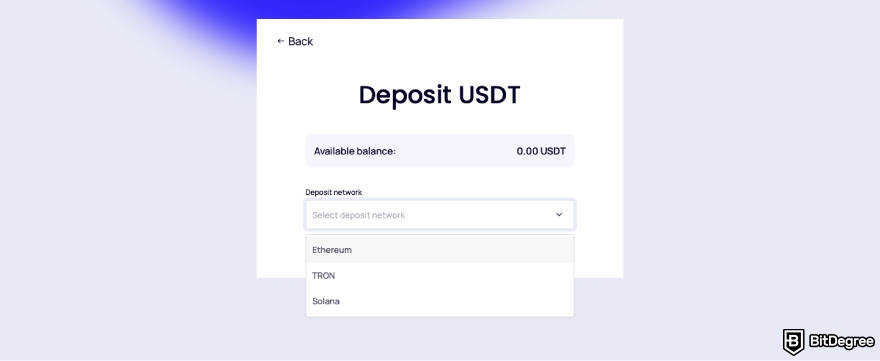
Step 5: Click [Generate address] if you want to make a deposit right now.
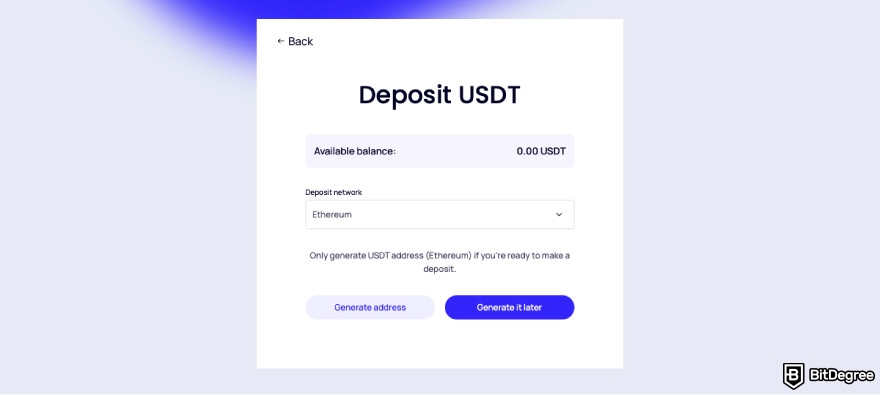
You’ll see a QR code on the screen. All you have to do now is scan the code with your wallet app and send your crypto to VALR, and you’re done!
Latest Binance Coupon Found:Sign up on Binance and claim up to $600 worth of rewards for completing simple tasks. Use Binance referral code (49316610) to activate the offer while it's still valid!
How to Withdraw From VALR
To round up this tutorial, I’m going to teach you how to withdraw your funds from VALR to another wallet address. Follow these instructions:
Step 1: Go to your dashboard and scroll down the list to find the asset you want to withdraw (or type it into the search bar), then click on the three dots on the right and click [Withdraw].
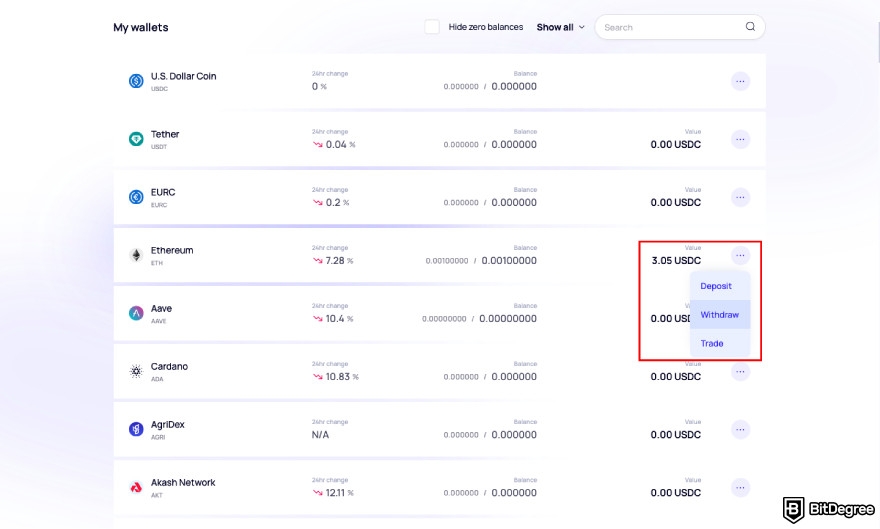
Step 2: Read the notice and click [I’m ready]. Check the box if you want to skip this message the next time you make a withdrawal.
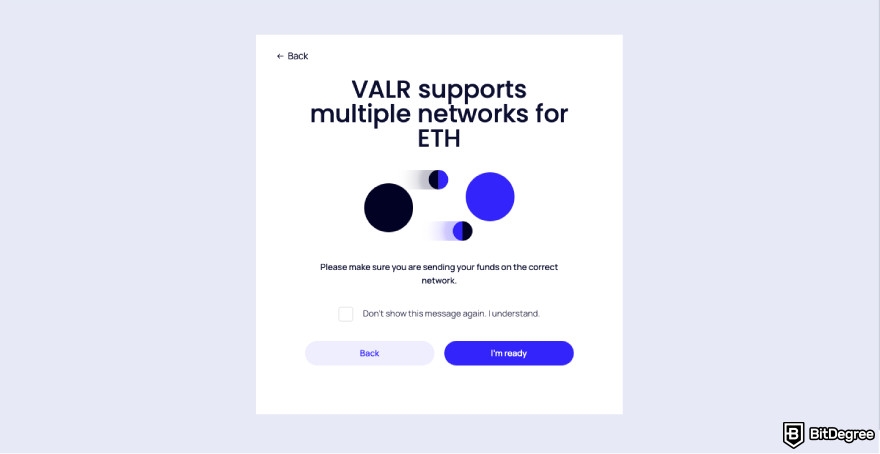
Step 3: Enter your wallet address, pick the network you want to withdraw through, enter the amount, and click [Review withdrawal]. You’ll be asked to confirm the transaction.
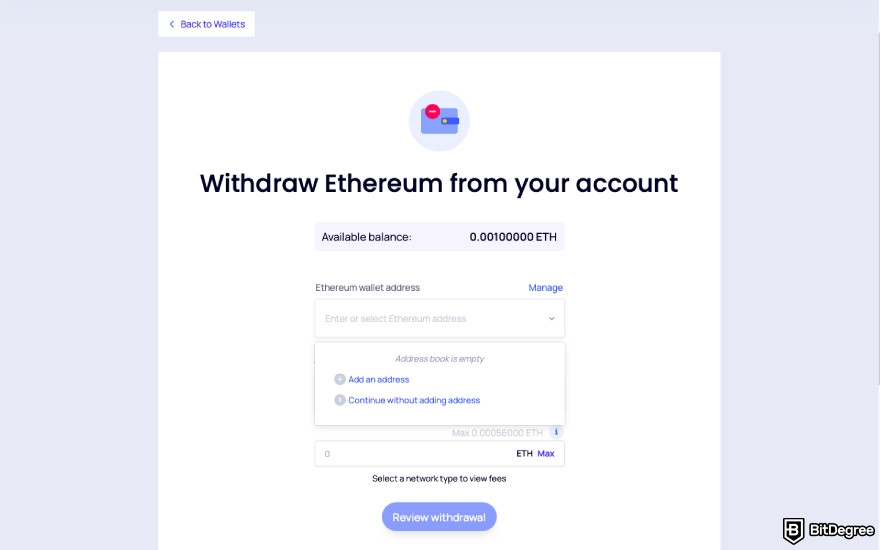
There you go! As with deposits, withdrawals can take up to a few minutes, so don’t worry if you don’t see the funds in your wallet immediately.
Comparison to Other Popular Exchanges
Let me guess – even after my in-depth VALR review, you’re still probably buzzing with questions, namely, “Is the VALR exchange worth it?”. It’s one thing to give some random platform a spin out of curiosity, but if it were to become your daily driver, you’d better make sure it’s up for the job. And what better way to find out than by comparing it to the very best the crypto scene has to offer?
VALR VS Binance
Whenever you stumble upon one of those “Best Crypto Exchange” articles, chances are you’ll see Binance as the Number 1. It’s currently the largest centralized crypto trading platform with over 250 million users across 180+ countries. Binance offers more than 400 cryptocurrencies and 1,500+ spot trading pairs. Therefore, blowing VALR’s selection out of the water.
If you prefer buying or trading crypto with fiat, Binance has got you covered, too – you’ll find 11 fiat pairs for spot trading and over 30 fiat currencies for debit/credit card purchases.
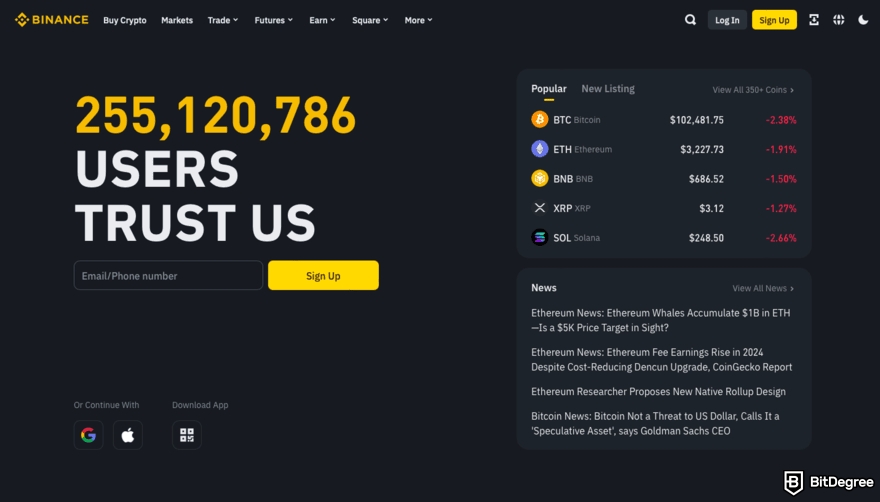
Binance is the better alternative for traders who want higher leverage: you’ll be able to go up to 10x for margin trading, compared to 5x on VALR. For perpetual contracts, the difference is even more pronounced, with an option to go as high as 125x, while VALR only offers up to 10x.
When it comes to other types of trading, Binance has an edge, as well. Aside from margin, futures, options, and OTC trading, you’ll find copy trading and a P2P marketplace. The exchange also has a more sophisticated staking system. You can choose Simple Earn for a lower APR or Advanced Earn for a higher yield through the "buy low/sell high" strategy.
In addition, Binance charges a 0.1% spot trading fee for both makers and takers, with a 25% discount for BNB holders.
📚 Read More: Binance Review
VALR VS Kraken
Launched in 2011, Kraken is one of the oldest CEXs out there, sporting an enviable track record for security and performance. The exchange features a user-friendly design with Lite and Pro mode, cold storage for 95% of the user funds, and over 500 cryptocurrencies.
On Kraken, you'll find OTC trading, margin trading with up to 5x leverage, and 300+ multi-collateral perpetual contracts with up to 50x leverage. In addition, as you've already heard, VALR only offers ZAR for trading. Meanwhile, on Kraken, you'll be able to trade USD, EUR, and GBP with other cryptocurrencies or with each other.
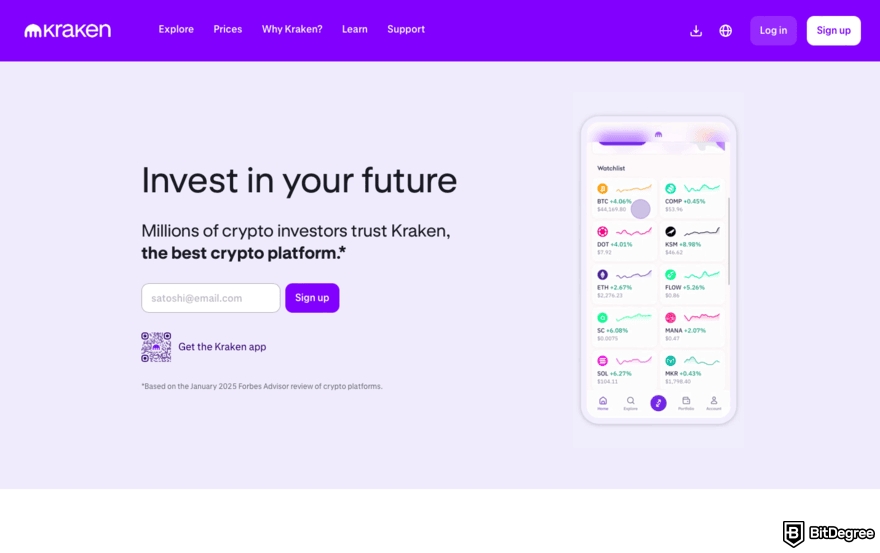
Kraken’s staking options include a larger crypto selection than VALR’s – you can pick between 22 assets, including USDC, USDT, ADA, and ATOM, for an APR that ranges between 1% and 11%. Like VALR, the veteran exchange lets you unstake your funds at any time, and the rewards are paid on a weekly basis.
That said, Kraken charges a 0.25% maker and 0.4% taker fee for spot trading, while futures trading costs 0.02% for makers and 0.05% for takers, which is pricier than VALR exchange fees. However, if you’re a maker on the highest VIP tier, your trading fees go all the way down to 0%.
📚 Read More: Kraken Review
VALR VS Bybit
Bybit is another long-established favorite in the crypto world. Launched in 2018, it boasts over 10 million users across 160+ countries and a massive selection of 1,600+ cryptocurrencies.
On this platform, you’ll find margin trading with up to 200x “smart leverage” that guarantees no liquidations before expiry. Bybit also supports copy trading, pre-market trading of tokens that haven’t launched yet, futures trading with USDT or USDC perpetual contracts, and demo trading.
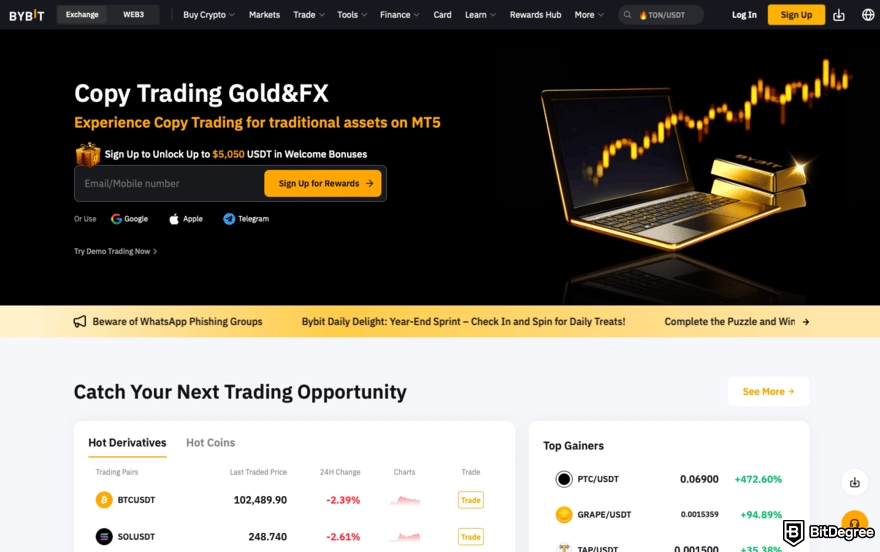
Fans of staking will probably choose Bybit over VALR for its wide range of staking options. Bybit Savings lets you lock up your crypto on fixed or flexible terms for a steady APR, while the Bybit Earn umbrella encompasses a variety of riskier options with higher yields.
Lastly, Bybit’s spot trading fee for non-VIP users is 0.1% for both makers and takers, while the perpetual contract trading fees are 0.0550% for takers and 0.0200% for makers.
📚 Read More: Bybit Review

- Secure and reliable
- Accepts fiat currencies
- Lots of trading options
- Reputable exchange
- Accepts fiat currencies
- Offers various trading options

- Fiat currencies - accepted
- Simple to use
- Accepts only the most trustworthy cryptocurrencies
- A leading cryptocurrency exchange platform
- Best for beginner investors
- Accepts fiat currencies

- Fully reserved and transparent
- Multiple tradable asset classes
- Over 300 supported cryptos
- Over 300 cryptocurrencies
- Secure & transparent
- Fully reserved
Conclusions: Is VALR Right for You?
I’ve told you all I could in this VALR review – the choice is yours now! All in all, it makes for an adequate alternative to the A-list exchanges like Binance, Bybit, and Kraken for users who want the lowest possible fees or want to juggle a massive number of sub-accounts.
I wouldn’t recommend this platform for those who prefer trading or buying crypto with fiat or need multilingual support. VALR probably won’t be the first choice for traders who prefer more niche coins, either.
I've said it before, and I'll say it again, though - nothing beats doing your own research and giving the platform a trial run to find out if it suits your needs. You never know what you like unless you try it!
The content published on this website is not aimed to give any kind of financial, investment, trading, or any other form of advice. BitDegree.org does not endorse or suggest you to buy, sell or hold any kind of cryptocurrency. Before making financial investment decisions, do consult your financial advisor.
Scientific References
1. Jia. R.: 'The Feasibility of Grid Trading Approach for Bitcoin Based on Backtesting';
2. Nezamaikin V. N., Zbirovskaya E. P.: 'Contemporary Challenges of OTC Trading in Digital Assets'.





